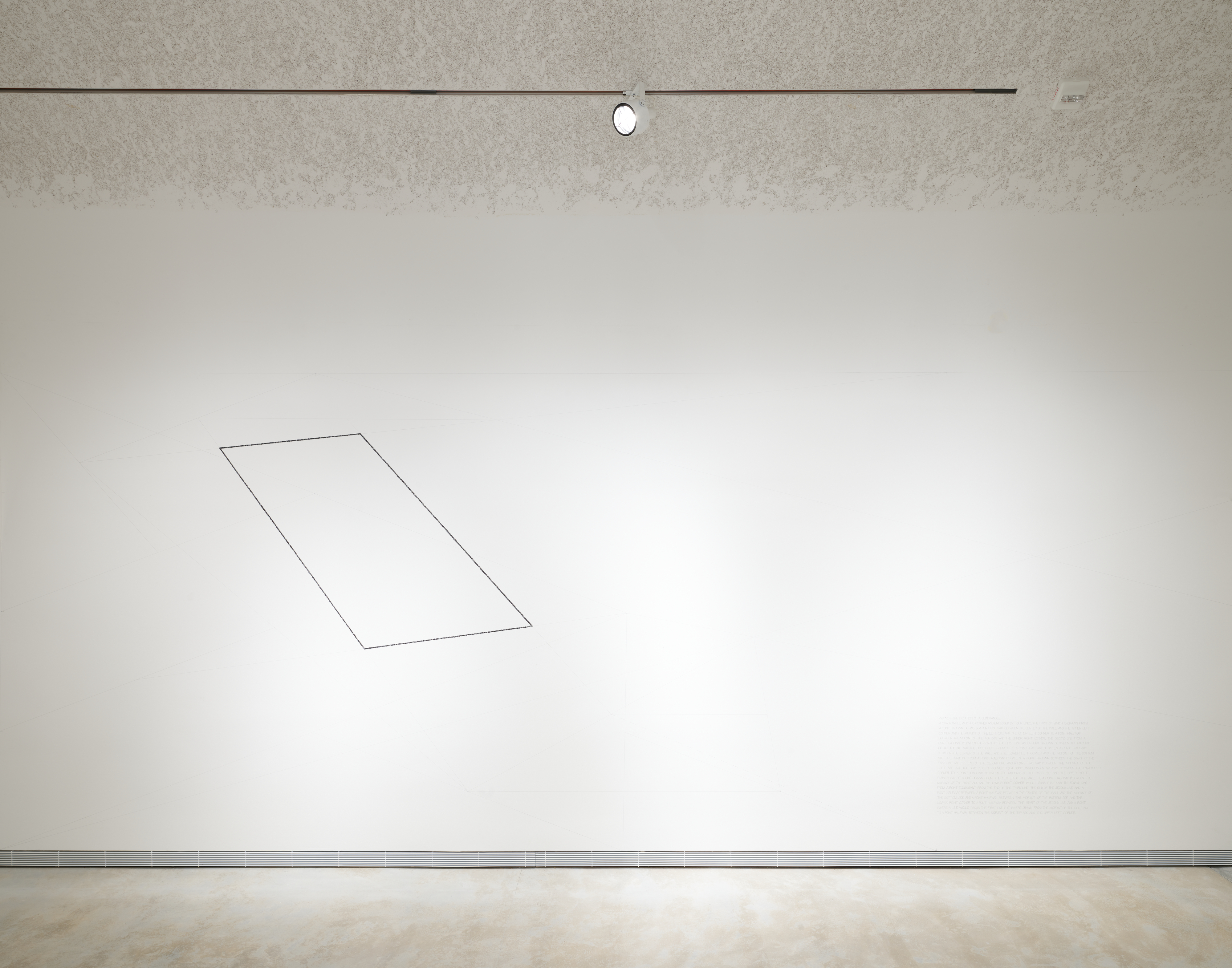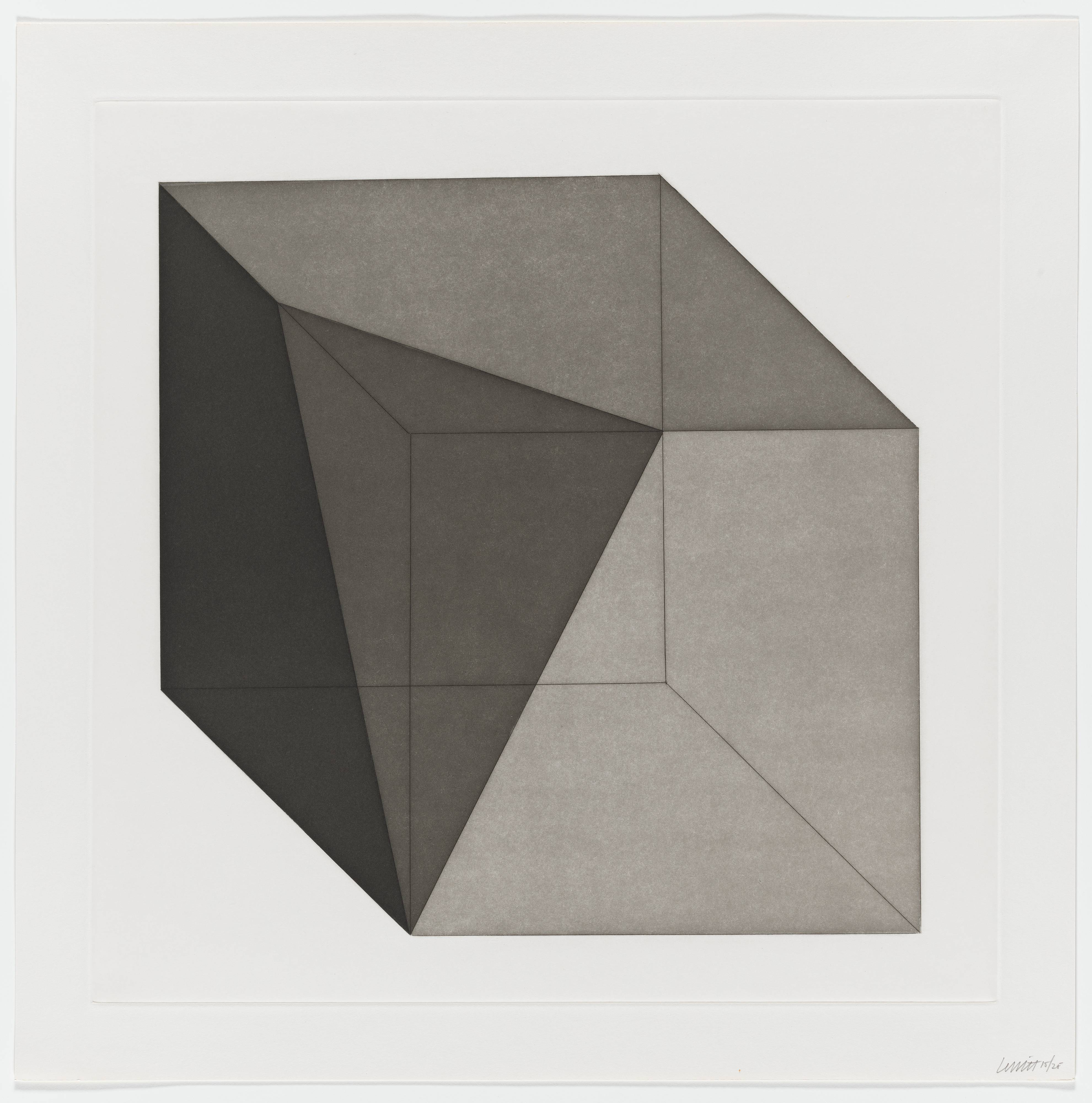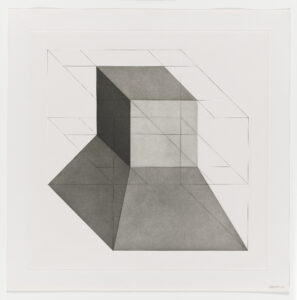Starting from the simple but radical new idea that an artwork's concept is more important than its form, Sol LeWitt helped revolutionize the definition of art in the 1960s. By the middle of that decade, LeWitt had rejected the dominant, psychologically charged abstract style of artmaking for impersonal, geometric forms. By repeating and varying a single principle, he created sculptural structures that were aesthetically satisfying even as their internal logic was pushed to the edge of irrationality.
LeWitt's procedure of repetition and variance is also the basis for his wall drawings. Each of these impermanent artworks consists of a set of the artist's instructions, something like a musical score, with the actual execution carried out by someone else.
Over the years, LeWitt's austere compositions gradually became more complex and sensuous, though they remained true to his original precepts.
 Sol LeWittWall Drawing #231 - The Location of a Quadrangle1974
Sol LeWittWall Drawing #231 - The Location of a Quadrangle1974 Sol LeWittWall Drawing 132April 1972
Sol LeWittWall Drawing 132April 1972 Sol LeWittSteel Structure1975/1976
Sol LeWittSteel Structure1975/1976 Sol LeWittForms Derived from a Cube, Plate #191982
Sol LeWittForms Derived from a Cube, Plate #191982 Sol LeWittForms Derived from a Cube, Plate #201982
Sol LeWittForms Derived from a Cube, Plate #201982 Sol LeWittForms Derived from a Cube, Plate #231982
Sol LeWittForms Derived from a Cube, Plate #231982 Sol LeWittForms Derived from a Cube, Plate #091982
Sol LeWittForms Derived from a Cube, Plate #091982 Sol LeWittForms Derived from a Cube, Plate #111982
Sol LeWittForms Derived from a Cube, Plate #111982 Sol LeWittForms Derived from a Cube, Plate #121982
Sol LeWittForms Derived from a Cube, Plate #121982 Sol LeWittForms Derived from a Cube, Plate #081982
Sol LeWittForms Derived from a Cube, Plate #081982 Sol LeWittForms Derived from a Cube, Plate #061982
Sol LeWittForms Derived from a Cube, Plate #061982 Sol LeWittForms Derived from a Cube, Plate #021982
Sol LeWittForms Derived from a Cube, Plate #021982